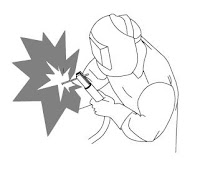- Shipping (Shipping & Ship Building Engineering)
- Offshore oil rigs (Oil & Gas Offshore Platforms & Facilities Engineering)
- Tall building metal construction (General High Rise Building Construction)
- Bridge (Bridge Construction)
- Pressure Vessel (Pressure Vessel Engineering)
- Pipe Distributors, (Piping and Pipe Line Construction)
- Boiler (Steam Generator Boiler & Engineering)
At first the use of metal cutting tools with a philosophy of separating molecules bonding metal using saws, Sculpture, Scissors, made of harder metal to metal being cut.





